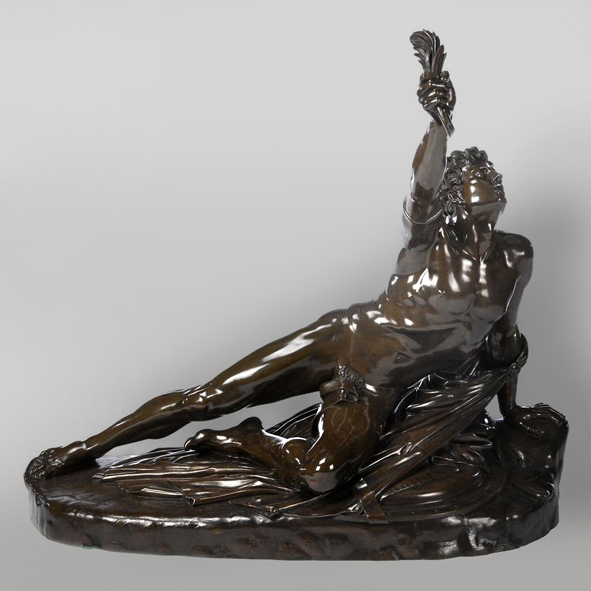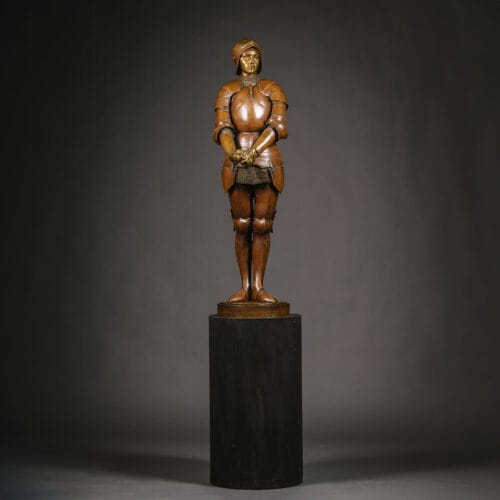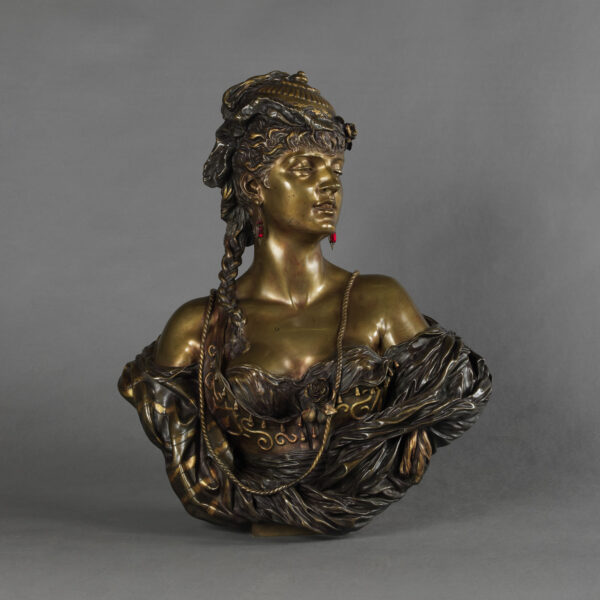Susse Frères
A Large Patinated Bronze Sculpture of Emperor Napoleon on Horseback
£120,000
A Large Patinated Bronze Sculpture of Emperor Napoleon on Horseback, Cast by Susse Frères, Paris, From the Model By Alfred Émilien O'Hara, Comte de Nieuwerkerke...
Dimensions
Hauteur : 98 cm (39 in)Width: 90 cm (36 in)
Depth: 33 cm (13 in)
Description
A Large Patinated Bronze Sculpture of Emperor Napoleon on Horseback, Cast by Susse Frères, Paris, From the Model By Alfred Émilien O’Hara, Comte de Nieuwerkerke (1811-1892).
Dark brown patinated bronze.
Depicting the Emperor Napoleon on horseback in military attire with distinctive frock coat and famous bicorne hat, one hand holding the horses reigns the other symbolically resting on his heart, the saddle cloth richly emblazoned with the imperial cypher.
Signed to the cast, “Nieuwerkerke 1850”, with “Susse Edit” for the Susse Frères foundry. Stamped ‘SUSSE FRES’ above a leaf mark alongside an indistinct pressed oval mark.
This large bronze equestrian group of the Emperor Napoleon astride his famous mount Morengo is a reduction of the monumental statue by the Comte de Nieuwerkerke (1811-1892) commissioned for the town of Lyon in 1850. One of the most iconic representations of Napoleon, it successfully captured the essence of the legendary leader, embodying his indomitable spirit and military prowess. The monumental version stood at nearly four and half meters high. Cast by MM. Eck and Durand it was inaugurated in the sculptor’s presence by the Louis-Napoléon Bonaparte (Napoleon III) on 20 September 1852 on the largest square on the Perrache peninsula (now place Carnot) in Lyon.
Writing in the ‘Revue Des Beaux Art’s in 1852 the critic A. Galimard (1813-1880) devoted two pages in praise of the sculptural group noting:
‘On s’occupe beaucoup dans le monde des arts de la statue équestre de l’empereur Napoléon , commandée à M. le comte de Nieuwerkerke par la ville de Lyon. La noblesse du sujet et la célébrité de l’artiste auquel cette difficile tache a éçé confiée , devait, ajuste titre , exciter la curiosité et les sympathies publiques.’
Praising Nieuwerkerke’s meticulous rendering of the subject and its composition, Galimard noted how some modern sculptors in an equivocal way had been known to sacrifice the man for the depiction of the horse. However, Nieuwerkerke’s sculpture subordinated the horse to the Emperor in such a way as to preserve the artistic truth and beauty for both horse and rider.
‘Quelques statuaires modernes n’avaient su allier l’homme au cheval, qu’à la triste condition de sacrifier le cavalier à sa monture; et ce parti pris a malheureusement doté nos places publiques de productions d’un goût équivoque. Mais tout en subordonnant le cheval de l’Empereur à l’Empereur lui-même, ce statuaire a su conserver au coursier du grand capitaine la vérité et la beauté dans l’art.’
In summary Galimard grandly concludes that in sculptural form it compares to the famous eulogies of the great men of the ancient world by authors such as Plutarch and Tacitus.
‘Historien avec le ciseau comme d’autres le furent avec la plume , M, le comte de Nieuwerkerke a fixé dans le bronze l’épopée impériale avec l’éloquente simplicité dont PIutarque et Tacite nous ont laissé d’impérissables modelés dans l’éloge de leurs grands hommes.’
The grand original bronze of ‘L’Empereur Napoléon Ier à cheval’ in Lyon was destroyed between November 1870 and February 1871. The only surviving full size version is a repetition with minor variations, inaugurated on 20 August 1854 at the centre of ‘place Napoléon’ in La Roche-Sur-Yon.
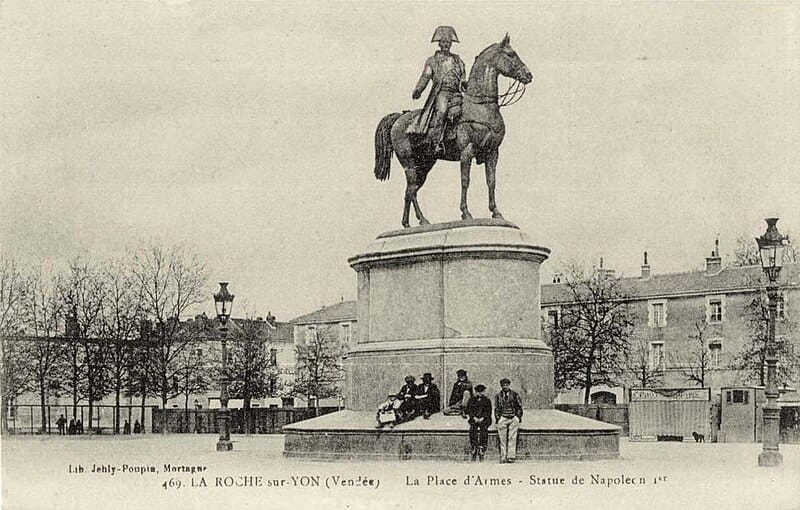
Postcard of place Napoléon’ in La Roche-Sur-Yon showing the Statue of Napoleon
Having received such universal praise and popularity Nieuwerkerke’s seminal sculpture of Napoleon on Horseback was cast in reduction by the Susse Frères foundry as recorded in their sales catalogues in 1860 and 1875 offered in five sizes, the present size titled ‘1re Grandeur’ being the largest. Nieuwerkerke choosing to instruct Susse Frères to cast his sculpture in bronze is a practice evidenced by his being recorded to have entered into edition contracts with Susse Frères in 1838, for his group of fighting horseman, and in 1843, for his equestrian statue of William of Orange. Bronze reductions, produced as part of the edition, would be made according to demand. Examples of Napoleon on Horseback in this, the largest size, are very rare. The only known comparative reduction by Susse Frères is in the collection of the château de Compiègne. Indeed, Emperor Napoleon III’s Royal Warrant was issued to Susse Frères in 1854 and the imperial family went on to spend considerable sums with the foundry. Patronage was no doubt accredited by Nieuwerkerke’s role as Intendent of the Beaux-Arts of the Household of His Majesty.
Beyond its artistic significance, the statue symbolizes the resilience of France, honouring a leader whose legacy continues to shape the nation’s identity.
France, Circa 1860.
(For a biography of Alfred Émilien O’Hara, Comte de Nieuwerkerke (1811-1892) please see the Provenance section of this listing)
Date
Circa 1860
Origine
France
Moyen
Bronze patiné
Signature
Signed to the cast, "Nieuwerkerke 1850", with "Susse Edit" for the Susse Frères foundry. Stamped ‘SUSSE FRES’.
Tracing its origins to 1758, the Paris foundry of Susse Frères is one of the oldest art foundries in Europe. They were appointed suppliers to Empress Marie Louise from 1812 and the Duc de Berry from 1818. Following the 1830 revolution they were granted a Royal Warrant as an official supplier to the monarchy. Originally a stationery company selling small bronze statuettes, the company began to focus on the process of bronze casting as early as 1839 under the direction of the brothers Michel Victor and Amedee Susse. They producing in that year a six-page catalogue of bronze sculpture.
In 1847 they obtained the right to use the Sauvage procedure for reduction, similar to that invented by Achille Collas and employed by Ferdinand Barbedienne. The ability to produce reductions of large scale bronzes enabled Susse to create editions of work in various sizes and opened up the market to collectors. Michel Victor Susse died in 1860 leaving Amedee as the sole director of the foundry until 1880 when Albert Susse became the director.
In the subsequent years Susse Frères obtained the rights to produce editions of the works of some of the most important French sculptors of the nineteenth century including: James Pradier, Pierre-Jules Mêne , Auguste Cain , Pierre-Nicolas Turgenev , Yevgeny Alexandrovich Lanceray, Louis-Ernest Barrias , Jules Dalou , Alexandre Falguière and Mathurin Moreau.
Renowned for the quality of its casting and multipatinated finishes, the firm of Susse Frères exhibited with notable success at many of the great exhibitions of the nineteenth century including a prize medal at the 1851 Great Exhibition in London and a Grand Prix at the 1905 Lieges Exposition Universelle.
Comte de Nieuwerkerke
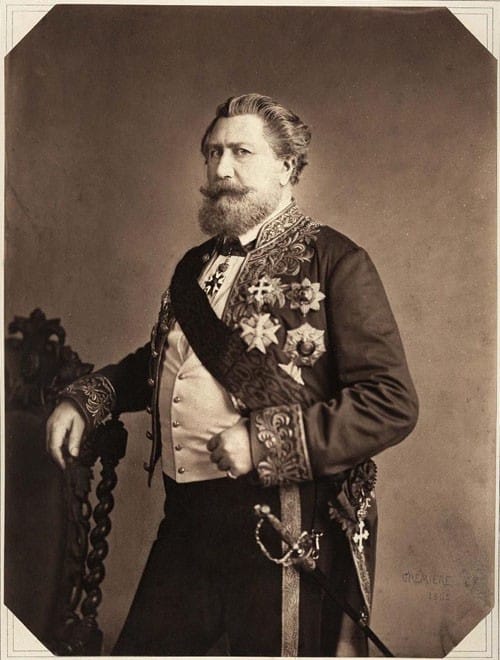
A photographic portrait of Comte Émilien de Nieuwerkerke (1811-1892), (1859) by CRÉMIÈRE Léon (1831-1913)
Alfred Emilien O’Hara, Comte de Nieuwerkerke (1811-1892) was an influential figure in the arts in France during the reign of Napoleon III becoming ‘dirécteur-général des Musées’ in 1849 and from 1863 serving as ‘surintendant des Beaux-Arts’; he also advised on acquisitions for the Royal collections.
A sculptor, museum director and collector he was a member of a prominent Royalist family of Dutch descent, who became a naturalised Frenchman and the morganatic husband of Princess Mathilde Letitia Wilhelmina Bonaparte.
Son of the Dutch Legitimist officer Charles de Nieuwerkerke (1785, Lyon – 1864, Paris), who returned to Paris with Louis XVIII in 1815 after the Hundred Days, he become a page of Charles X in 1825 and entered the ‘école royale de cavalerie’ at Saumur in 1829. However, as a legitimist, he abandoned his career on Charles X’s fall in July 1830 during the July Revolution.
On 30 June 1832, aged 21, he married count Auguste de Monttessuy’s daughter Thécla (1810–1884) however, the couple quickly separated on grounds of incompatibility of temperaments.
In 1834, during a six-month stay in Italy, he studied ancient art and sculpture and decided to become a sculptor himself on returning to France. Studying under James Pradier (1790-1852) and baron Carlo Marochetti (1805-1867) Nieuwerkerke became a sculptor in the academic tradition. He exhibited at the “Salons” of 1842, 1843, 1846 (a bronze bust of René Descartes), 1847 (6 works including a plaster statue of La Reine Elisabeth la Catholique entrant à Grenade [Queen Elizabeth the Catholic entering Granada], 1849, 1855, 1855, 1857, 1859 (a bust of Princess Murat) and 1861. He also made a statue of Napoleon I on horseback for the town of Lyons (1850-1852, but which was destroyed in 1870-1871), a copy of which was commissioned by the town of La Roche-sur-Yon (1852-1854). In 1852, he also realised busts of the Prince-President, the Princess Mathilde, and the young Eugenie de Guzman Palafox y Portocarrero, which, slightly modified, became the official portrait bust of Empress Eugenie. One of his best-known other works is ‘The battle of the duke of Clarence’, bronze copies of which were cast by Susse Frères from 1839 to 1875 – one copy entered the English royal collection at Osborne House in 1901.
In 1845, during a trip into Italy with Henri de Bourbon, comte de Chambord, he visited the collection of the Russian Prince Anatoly Nikolaievich Demidov, 1st Prince of San Donato and became the lover of Demidov’s wife Princess Mathilde, (niece of Napoleon the future President of the Second Republic, subsequently Emperor of the French), their liaison lasted until August 1869.
An influential man at the centre of artistic and political circles, he was obliged to abandon his own artistic practice due to numerous other appointments: he was made Director General of National Museums in 1849, ‘Intendant des Beaux-Arts’ of the Emperor’s Household in 1853, Honorary Chamberlain of the Emperor in 1859, ‘Surintendent des Beaux-Arts’ in 1863 (a position from the Ancien Régime that was restored for him). He was also elected a free member of the ‘Académie des Beaux-arts’ in 1853, Vice-President (in 1855) and President (in 1856) of the ‘Société des Antiquaires de France’ [, senator (by a decree of 1864), Vice-President (in 1863) and President (in 1865) of the ‘Commission des Monuments historiques’.
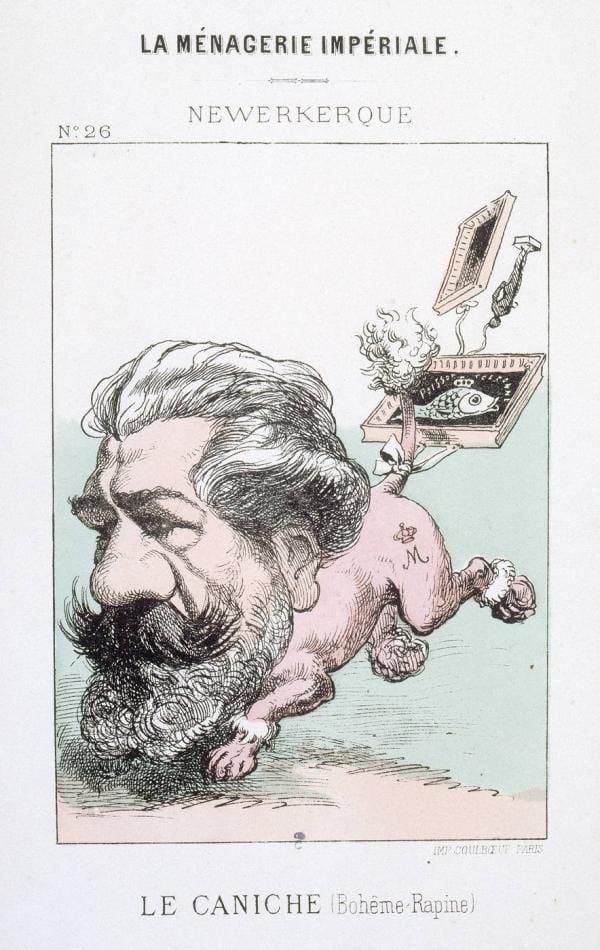
La ménagerie impériale, portrait-charge n°26 de Nieuwerkerke, “le caniche”, Hadol, dit White Paul, Circa 1870. Musée national du château de Compiègne, © Photo RMN – Grand Palais – D. Arnaudet, 97-011082 / C.63.105/27.
After the fall of the imperial regime in 1869 he lost his position as ‘Surintendent des Beaux-Arts’, when the department was replaced by the ‘Ministère des Beaux-Arts’, and the Republican Maurice Richard was nominated as its head. He was then given the more modest role of ‘Surintendent des Musées Impériaux’. When Nieuwerkerke learnt of Napoleon III’s surrender at Sedan on 3 September 1870, he quickly resigned (on 5 September) and managed to escape to England, narrowly escaping being arrested. In London he tried to sell some of the smallest of his objets d’art to the South Kensington Museum. These came from his extraordinary collection of more than 800 historic art objects, in metal and gold, sculptures, ceramics, painted enamel, glass and furniture. His collection also included extraordinary Medieval and Renaissance arms and armour.
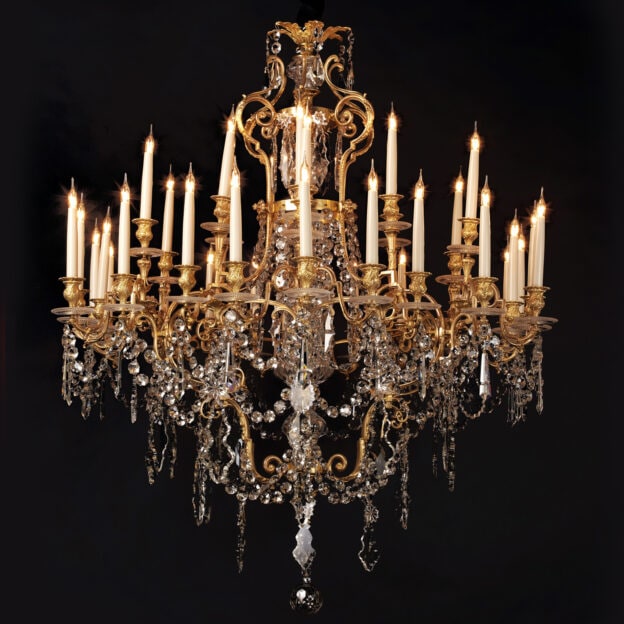




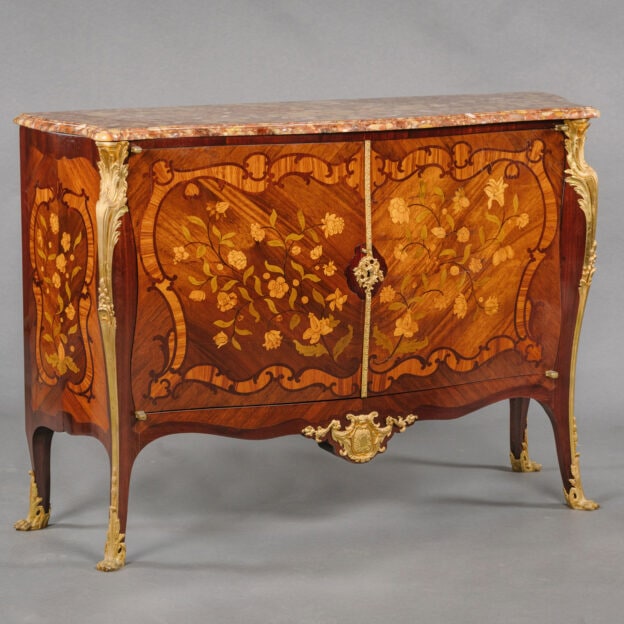
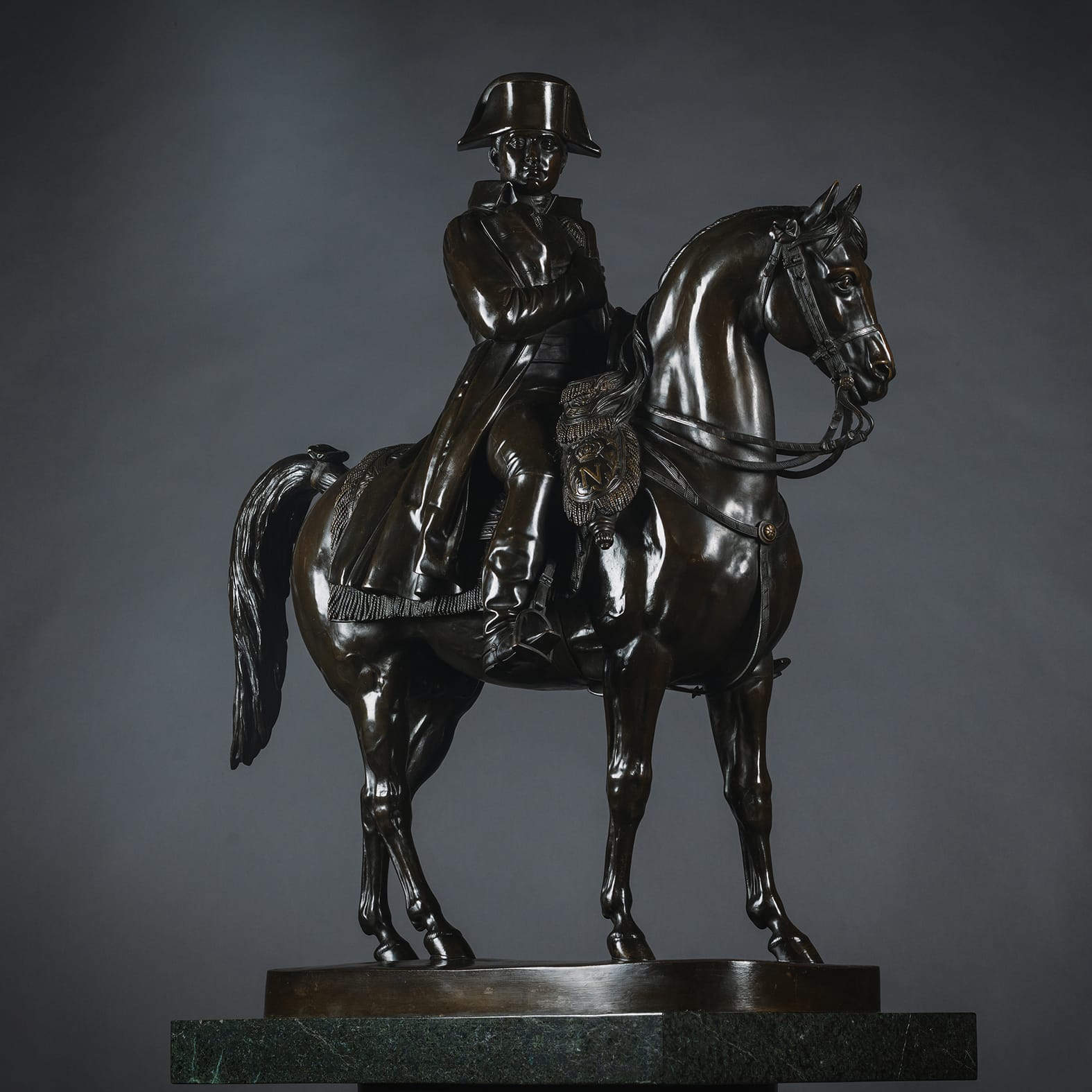
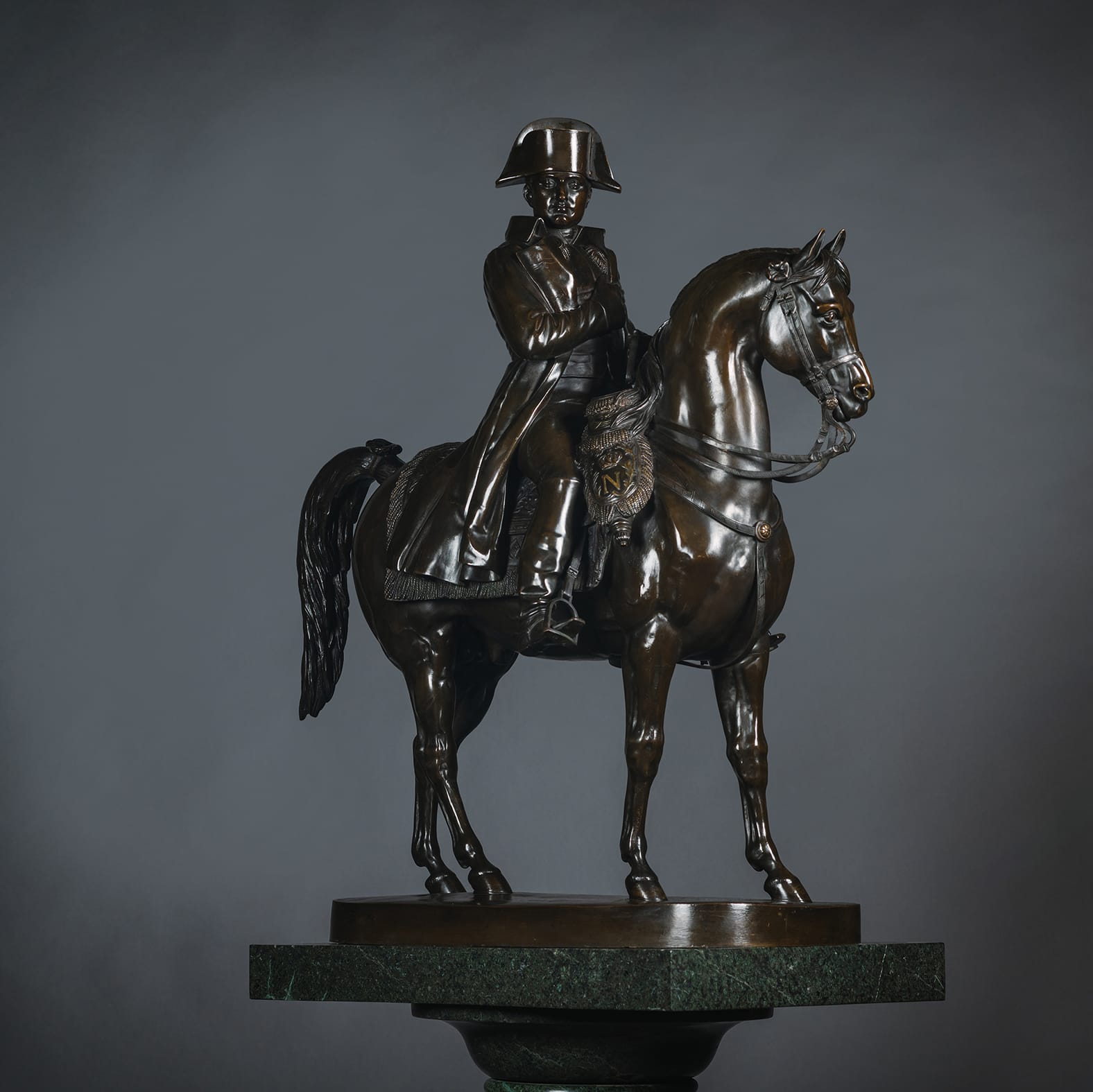
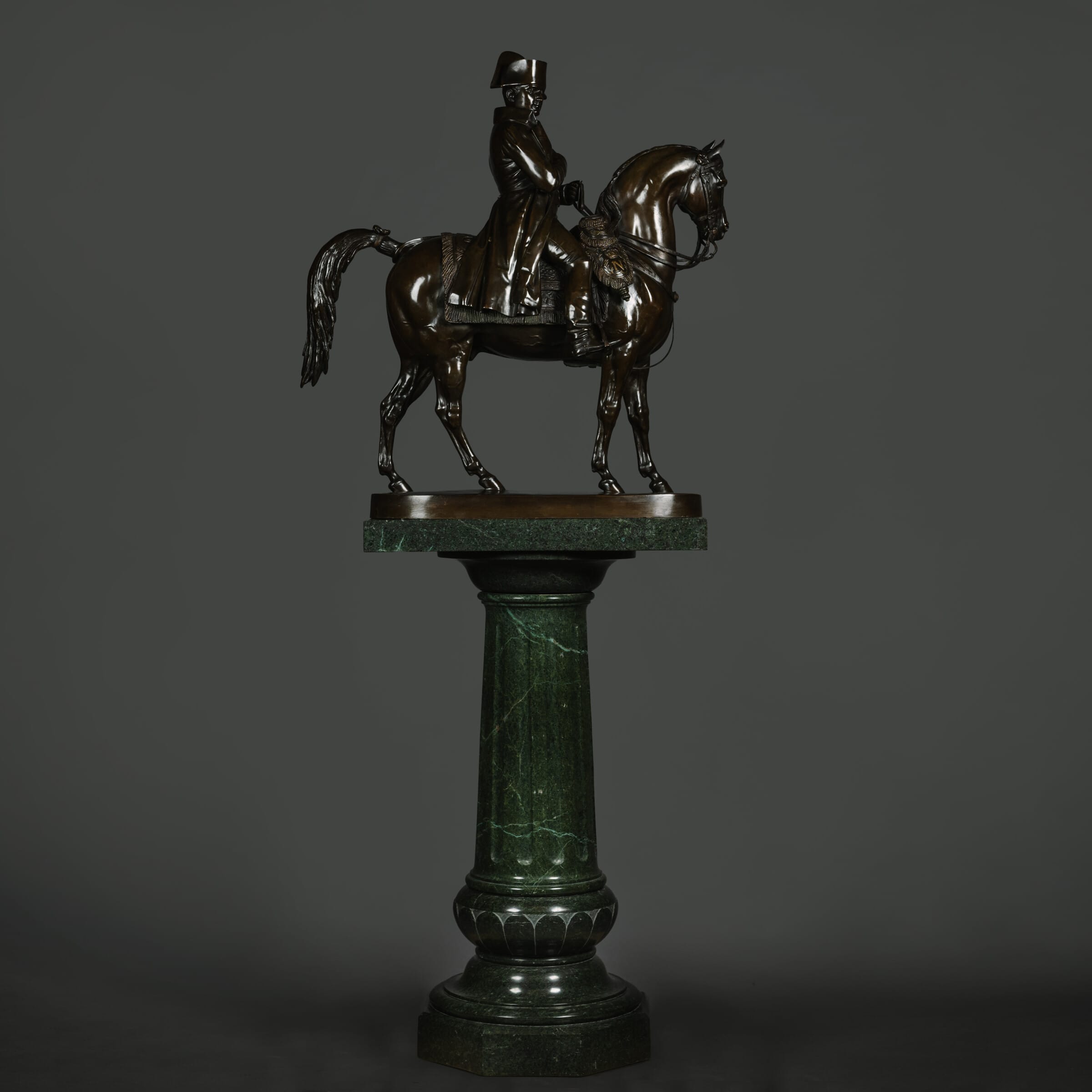
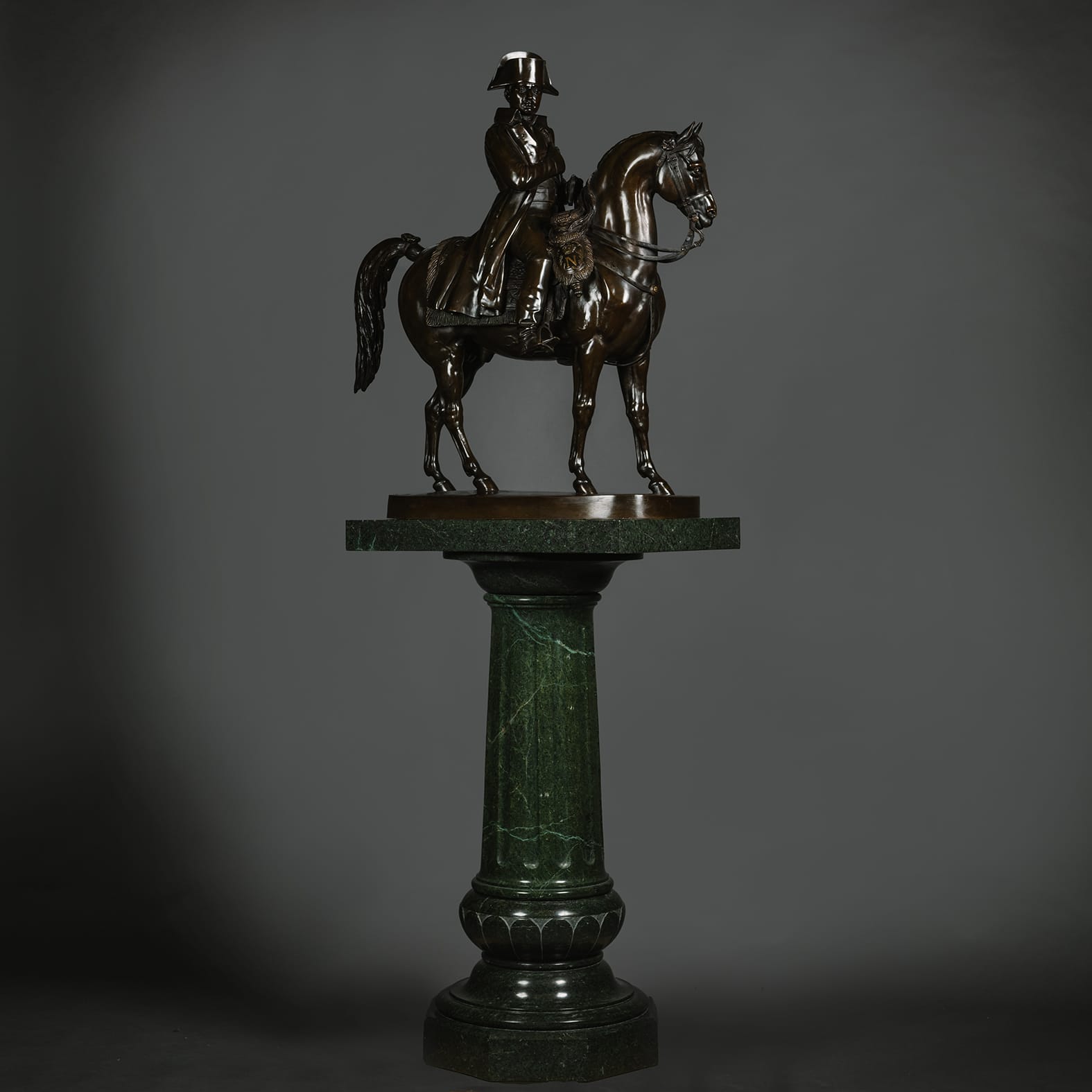
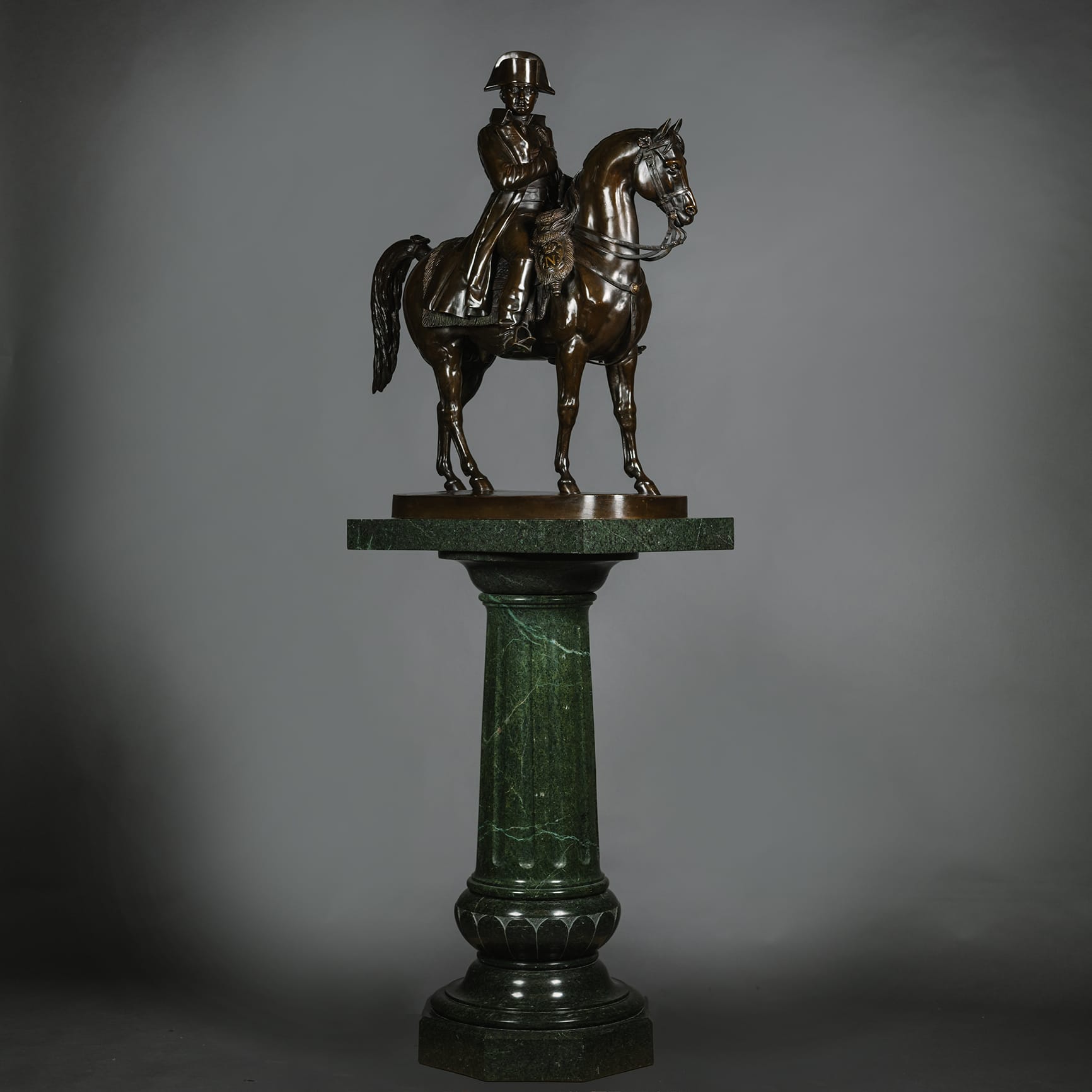
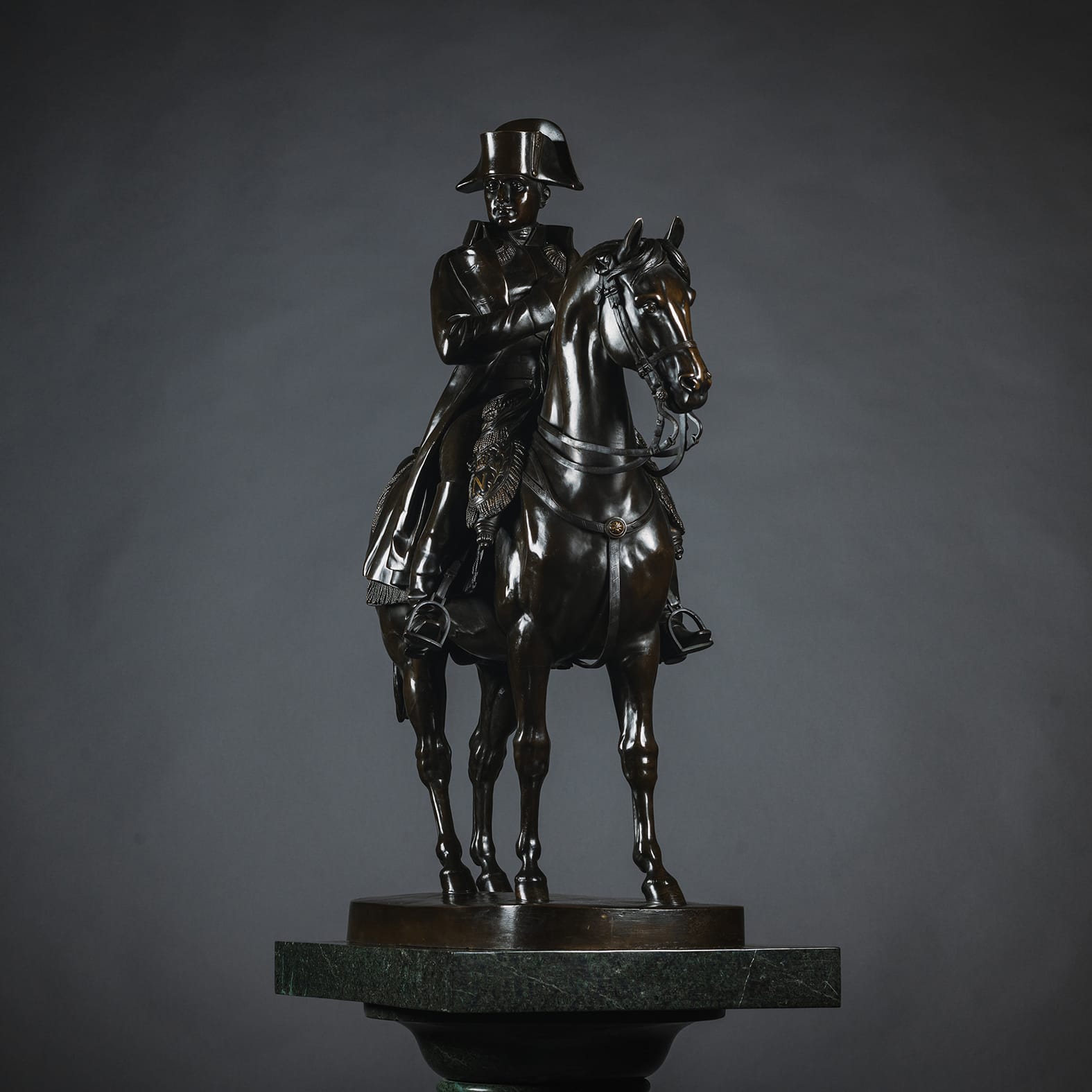
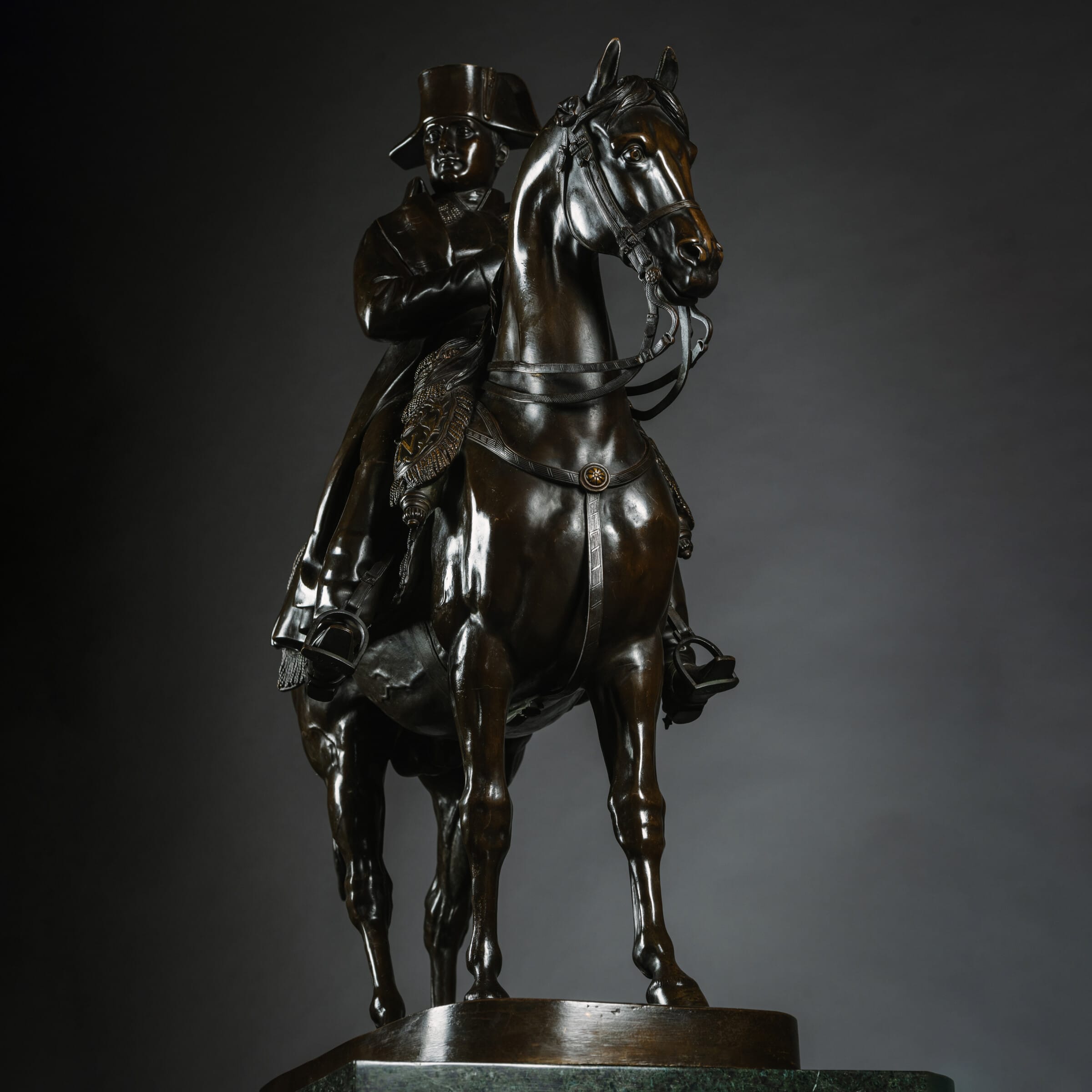
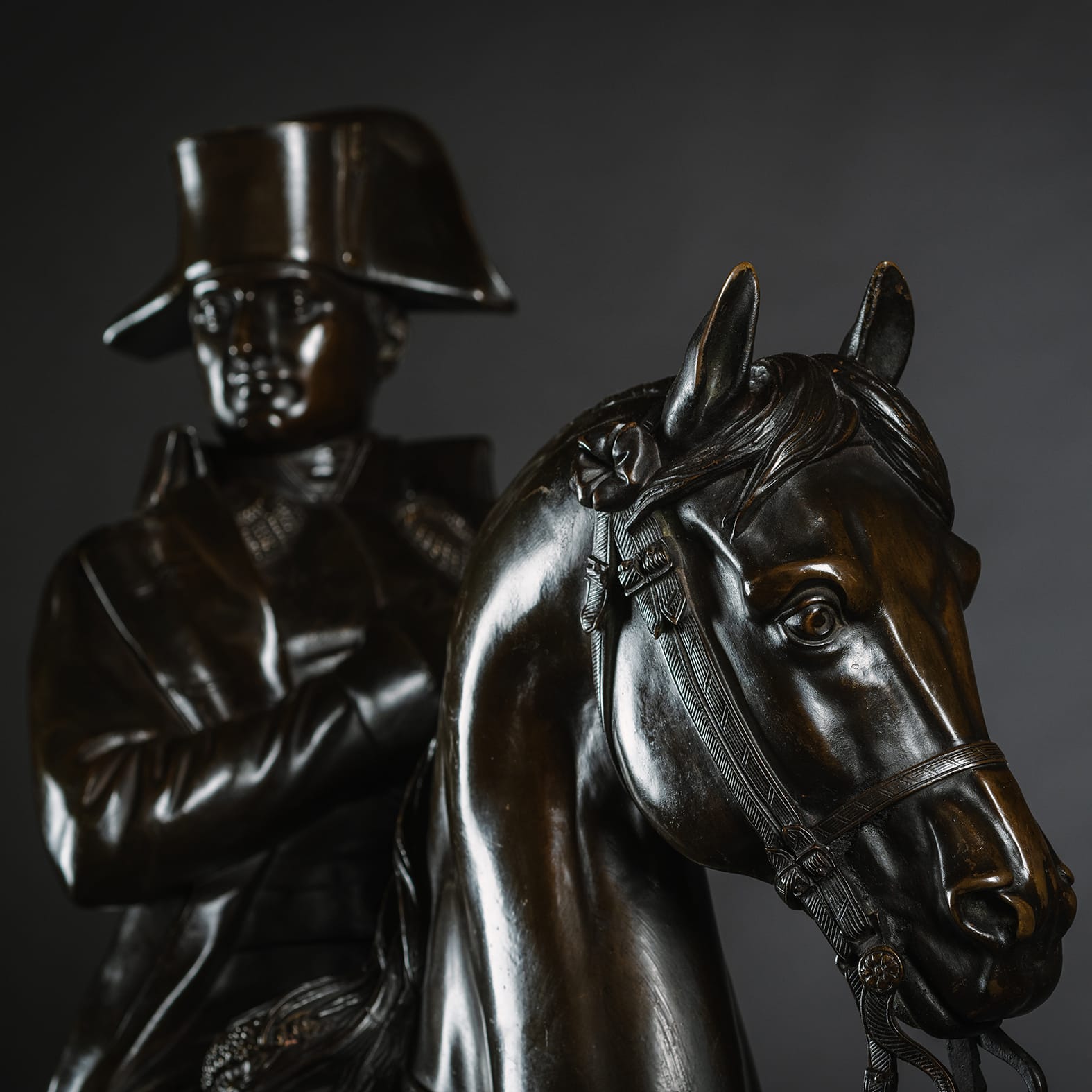
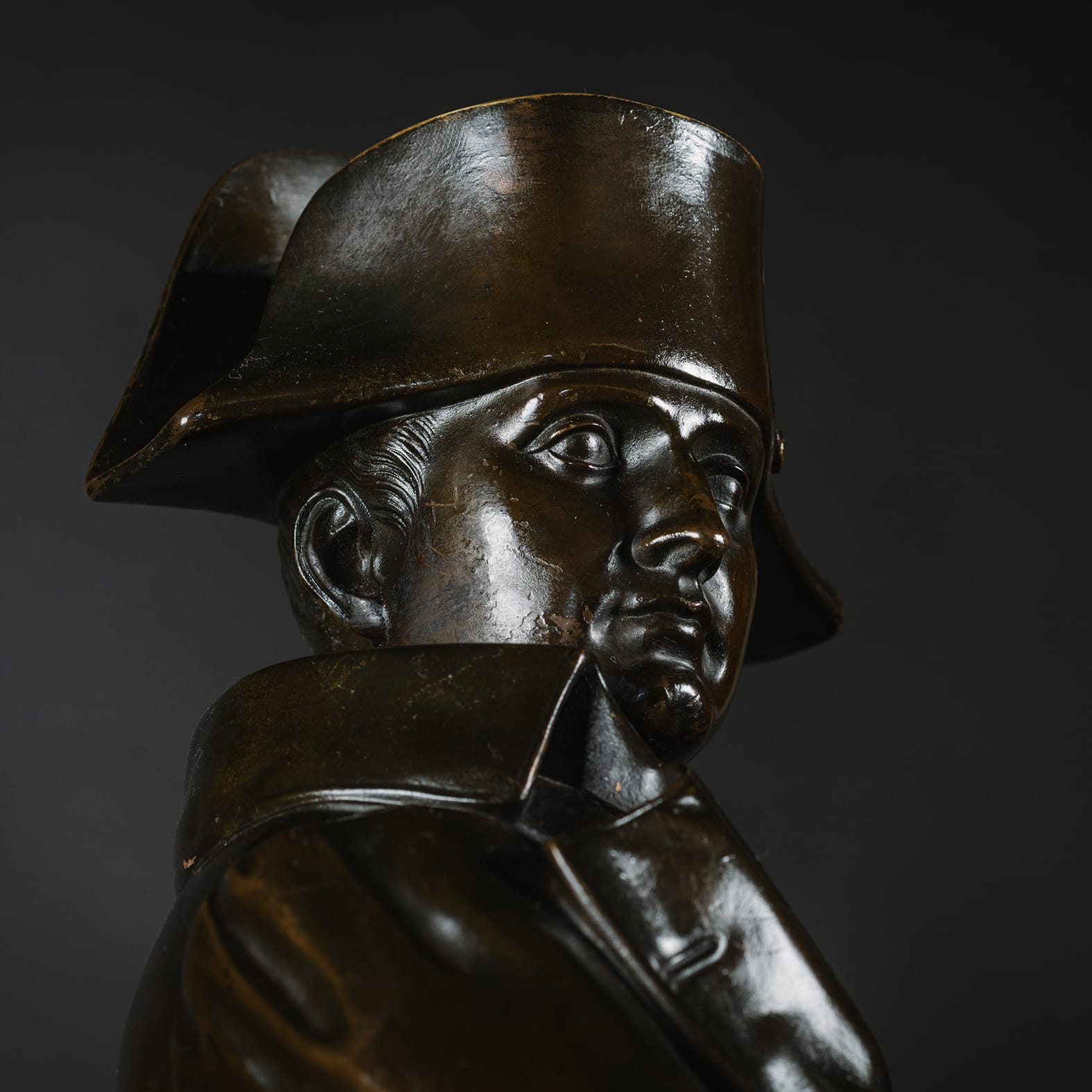
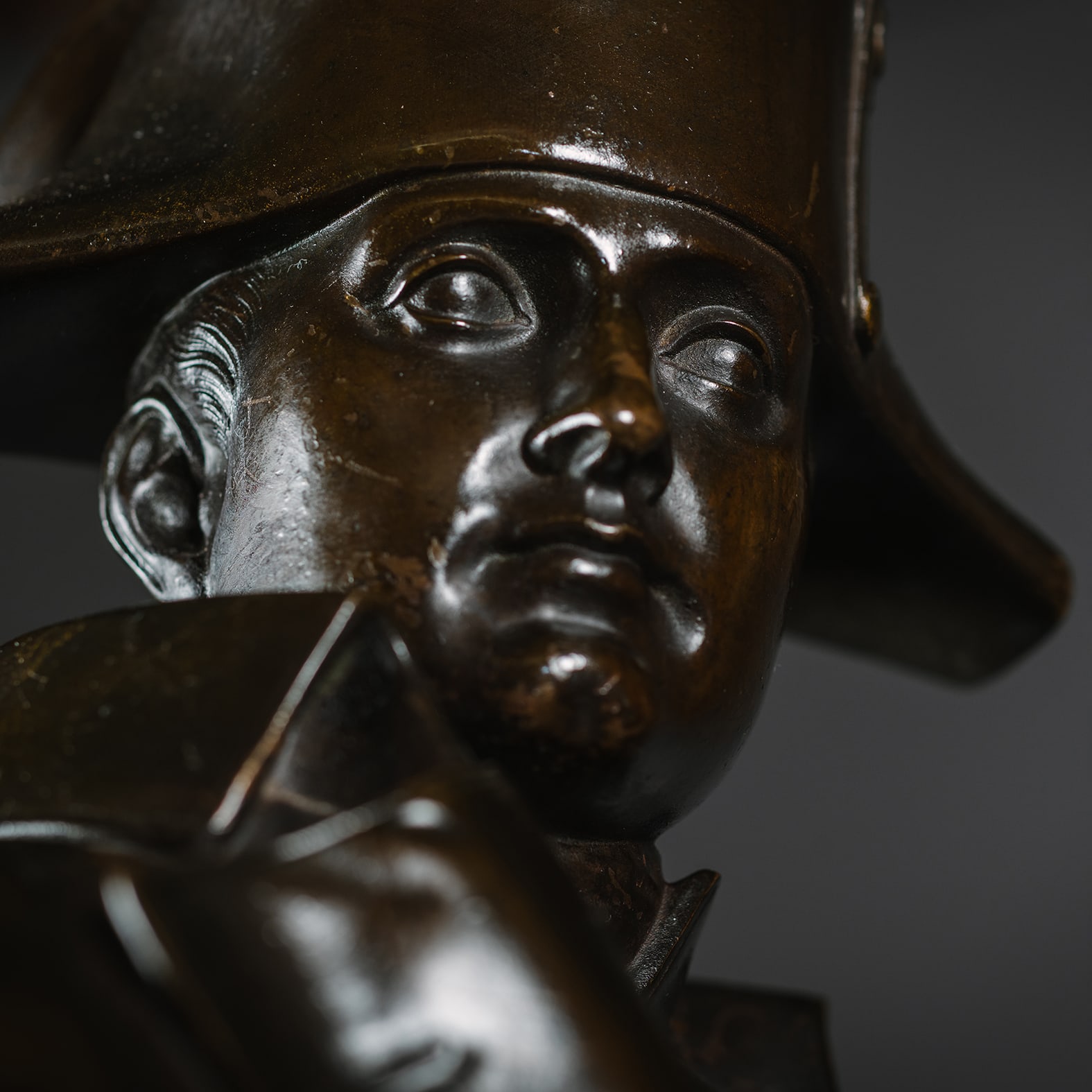
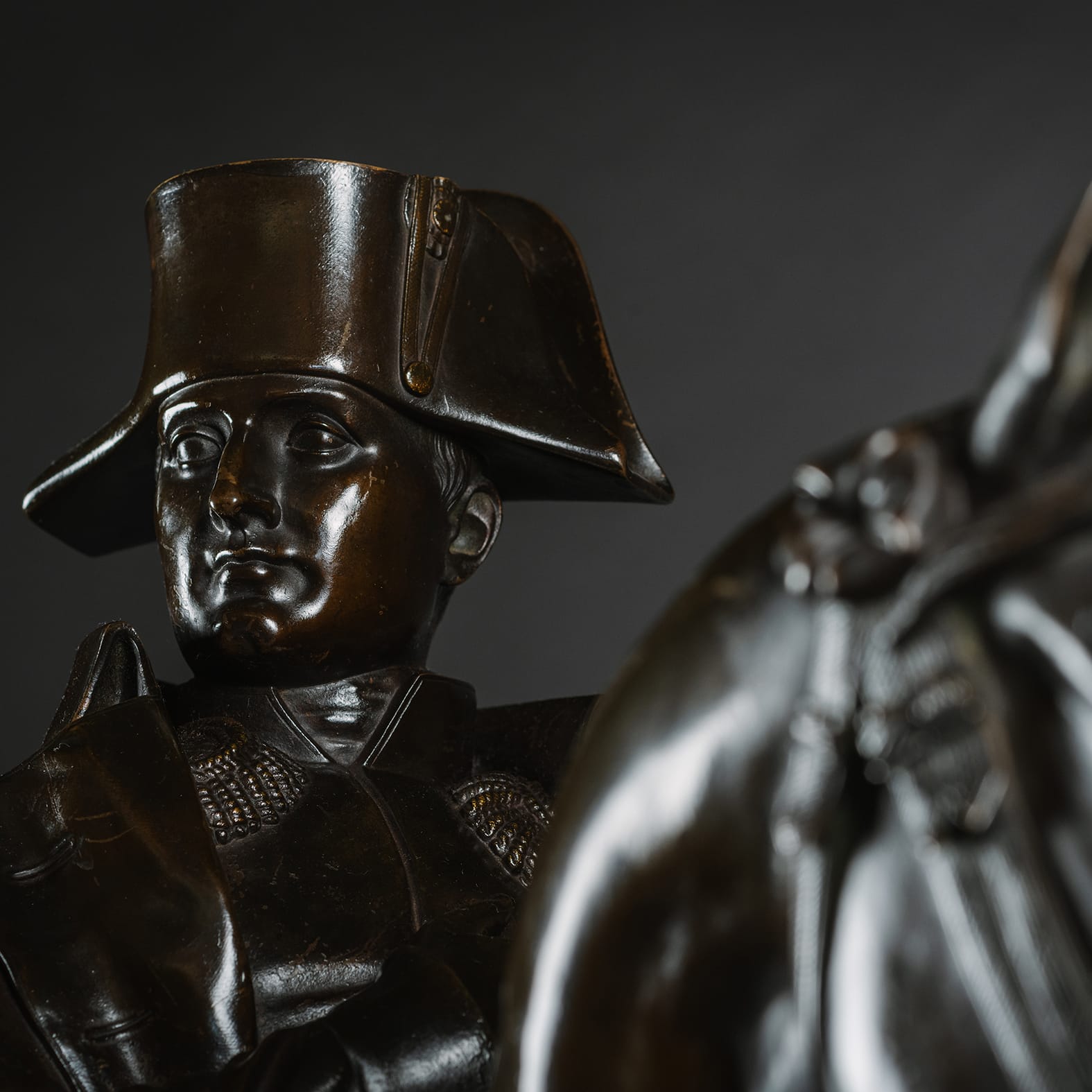
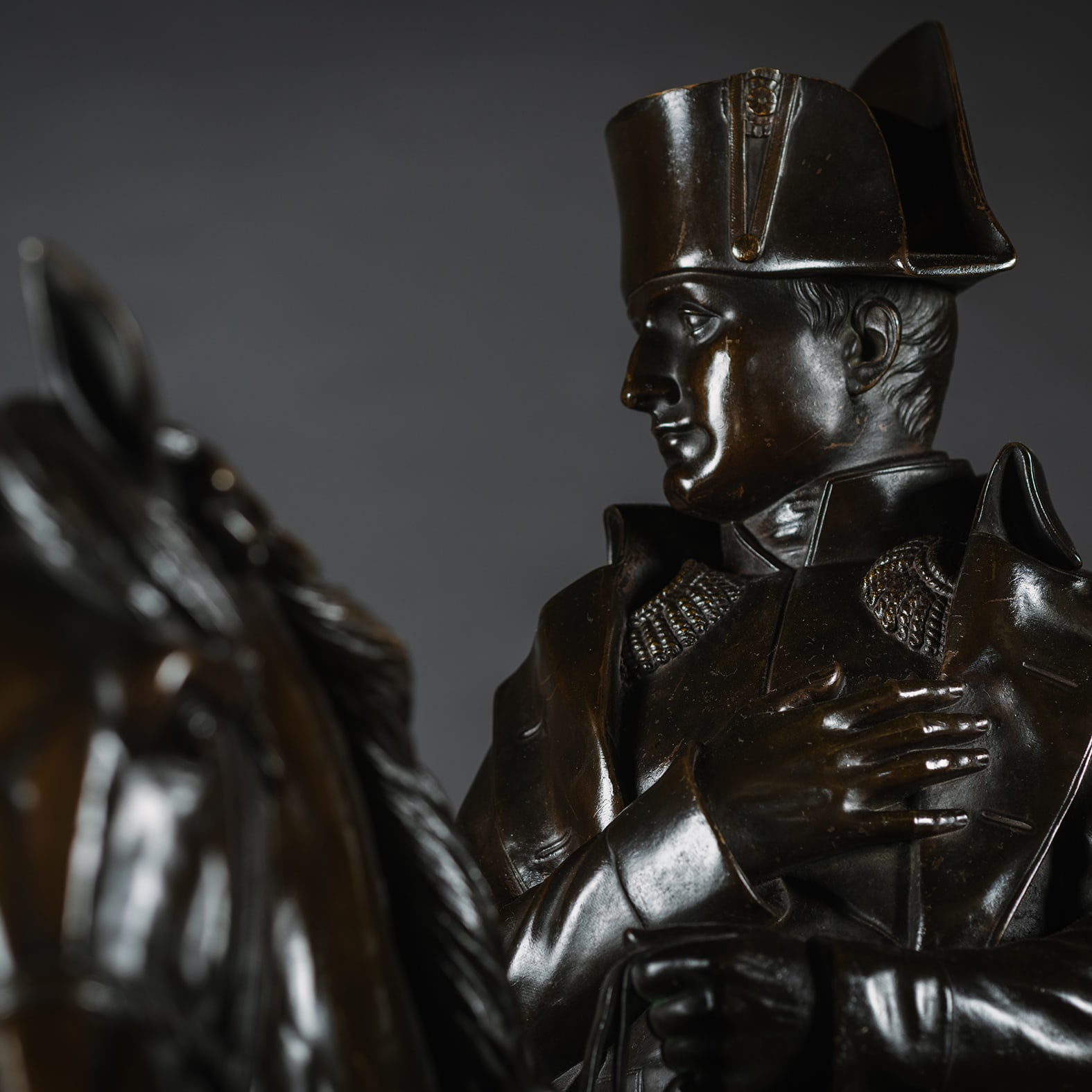
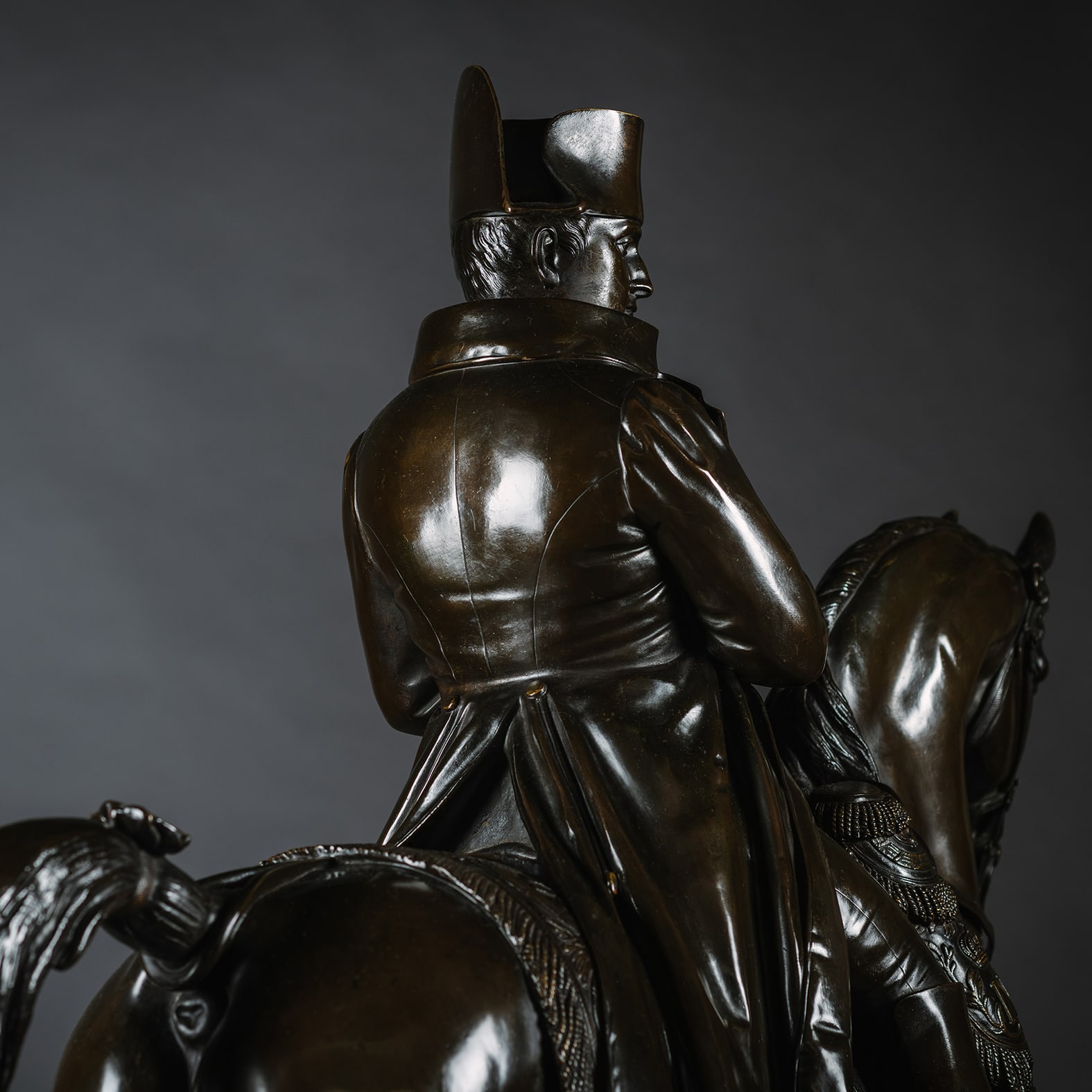
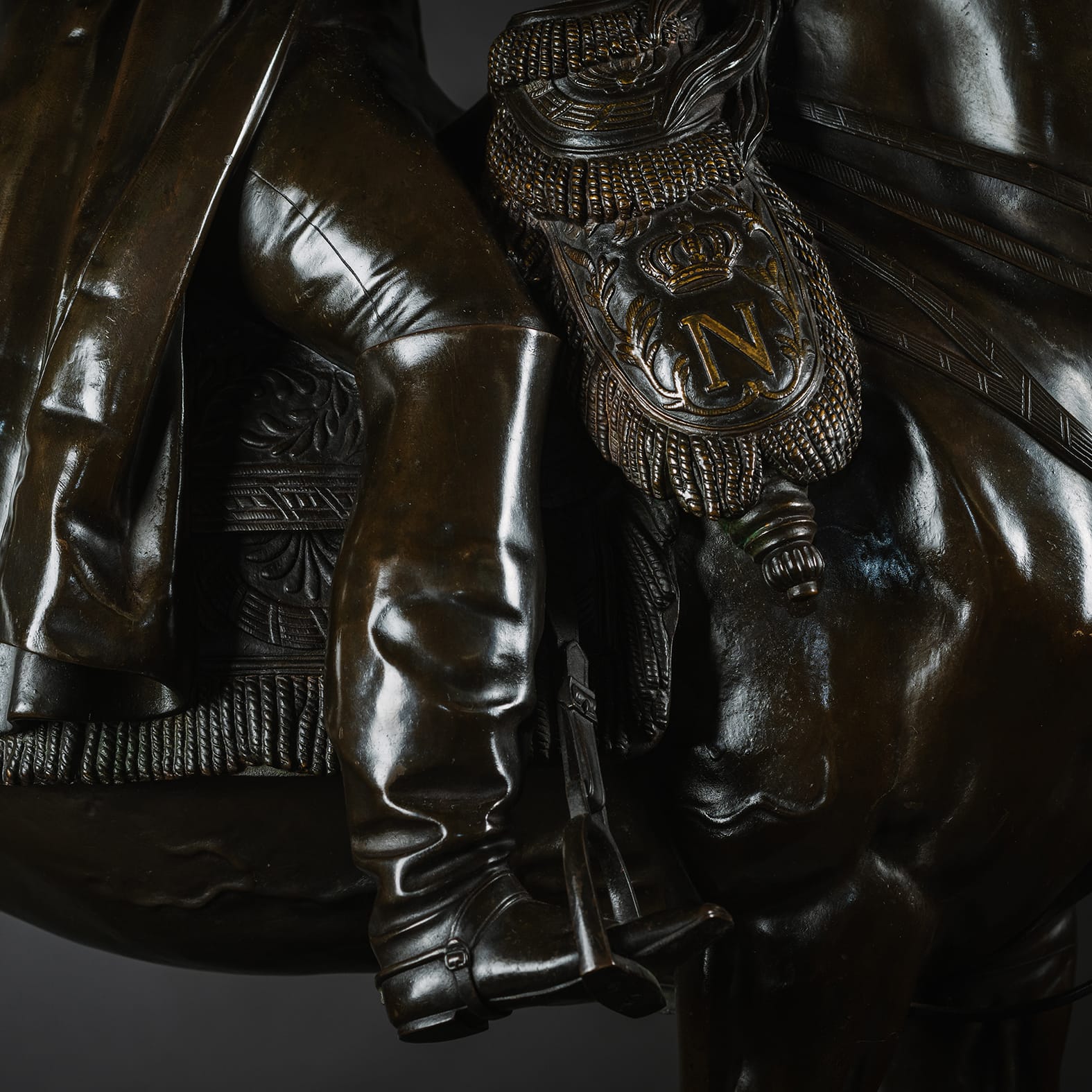
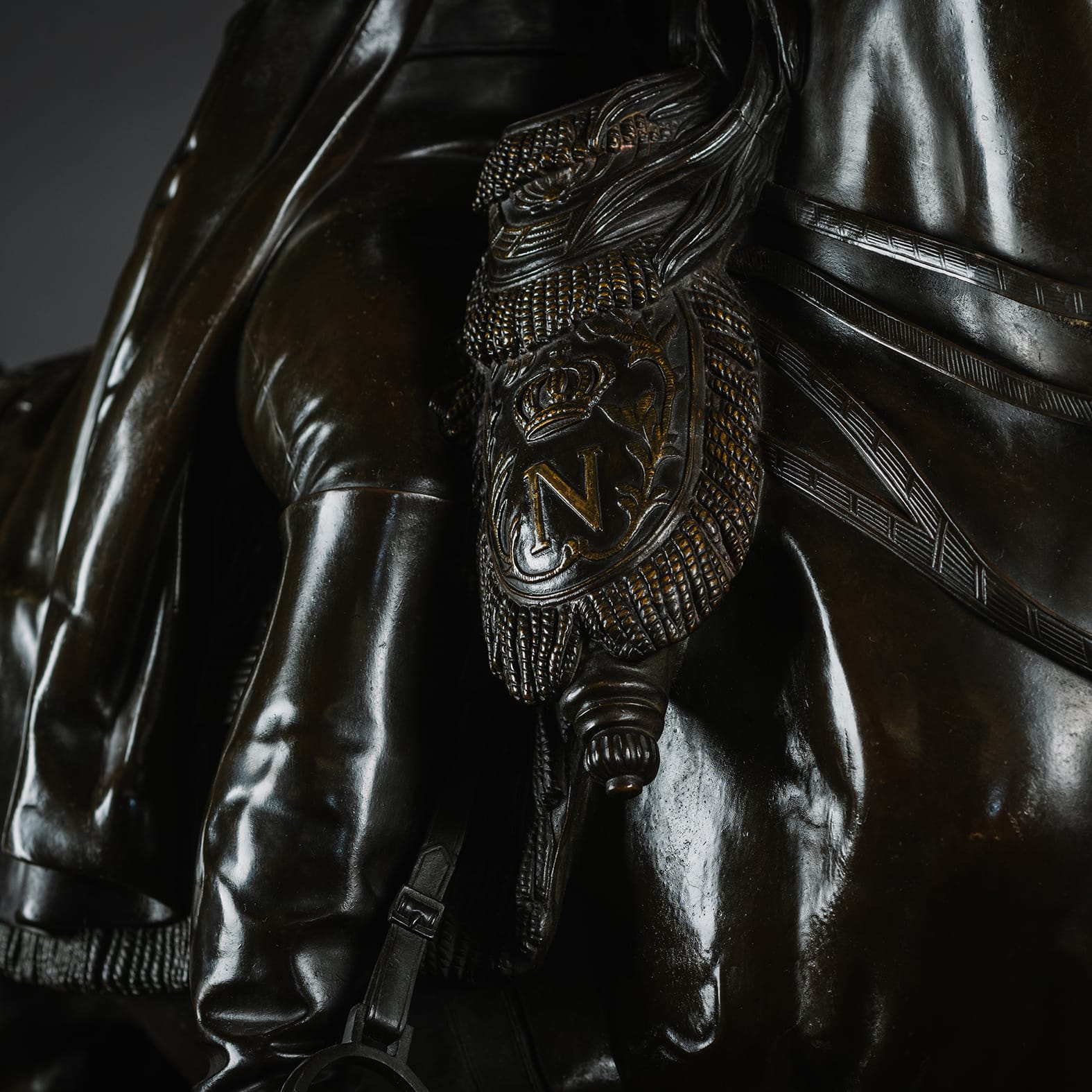
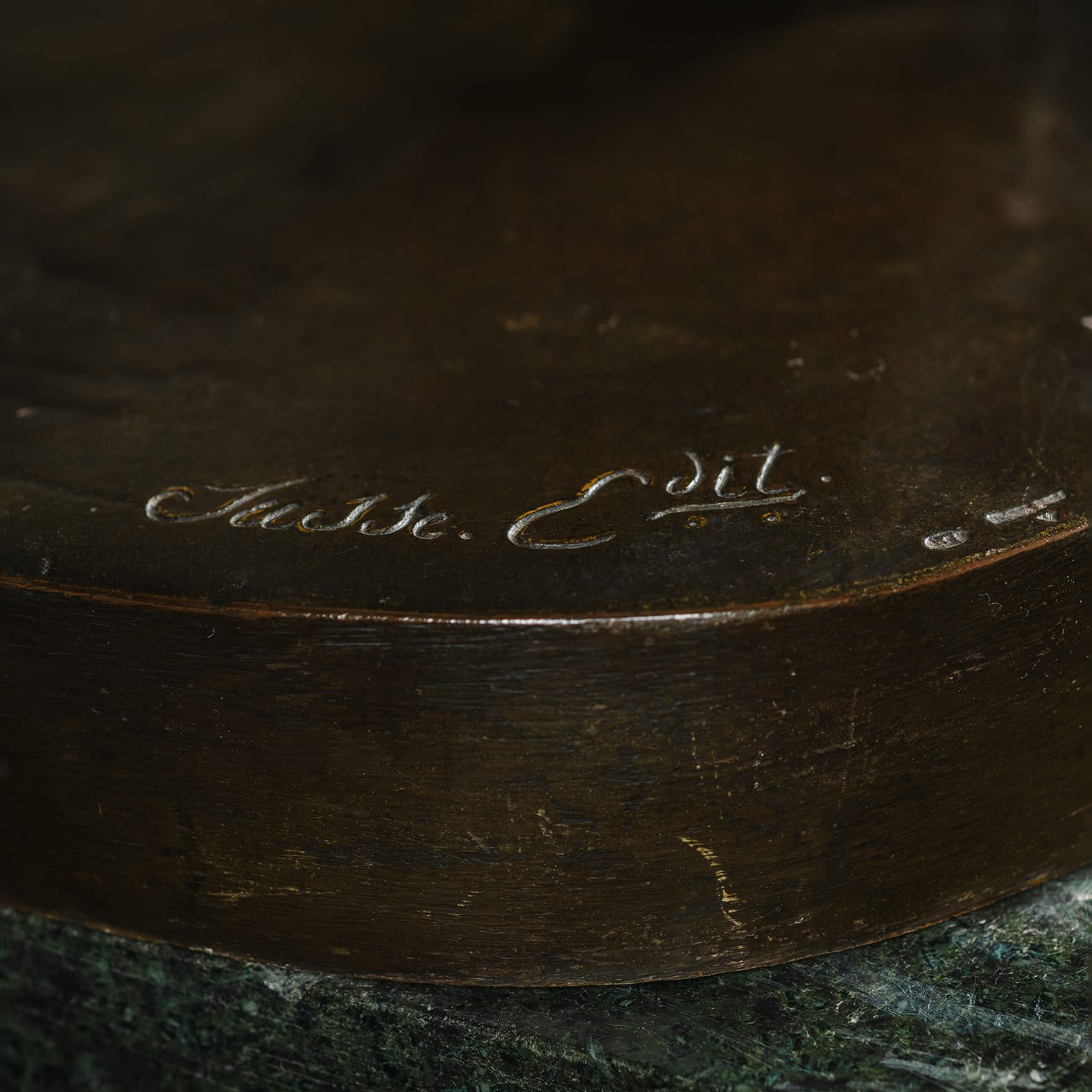
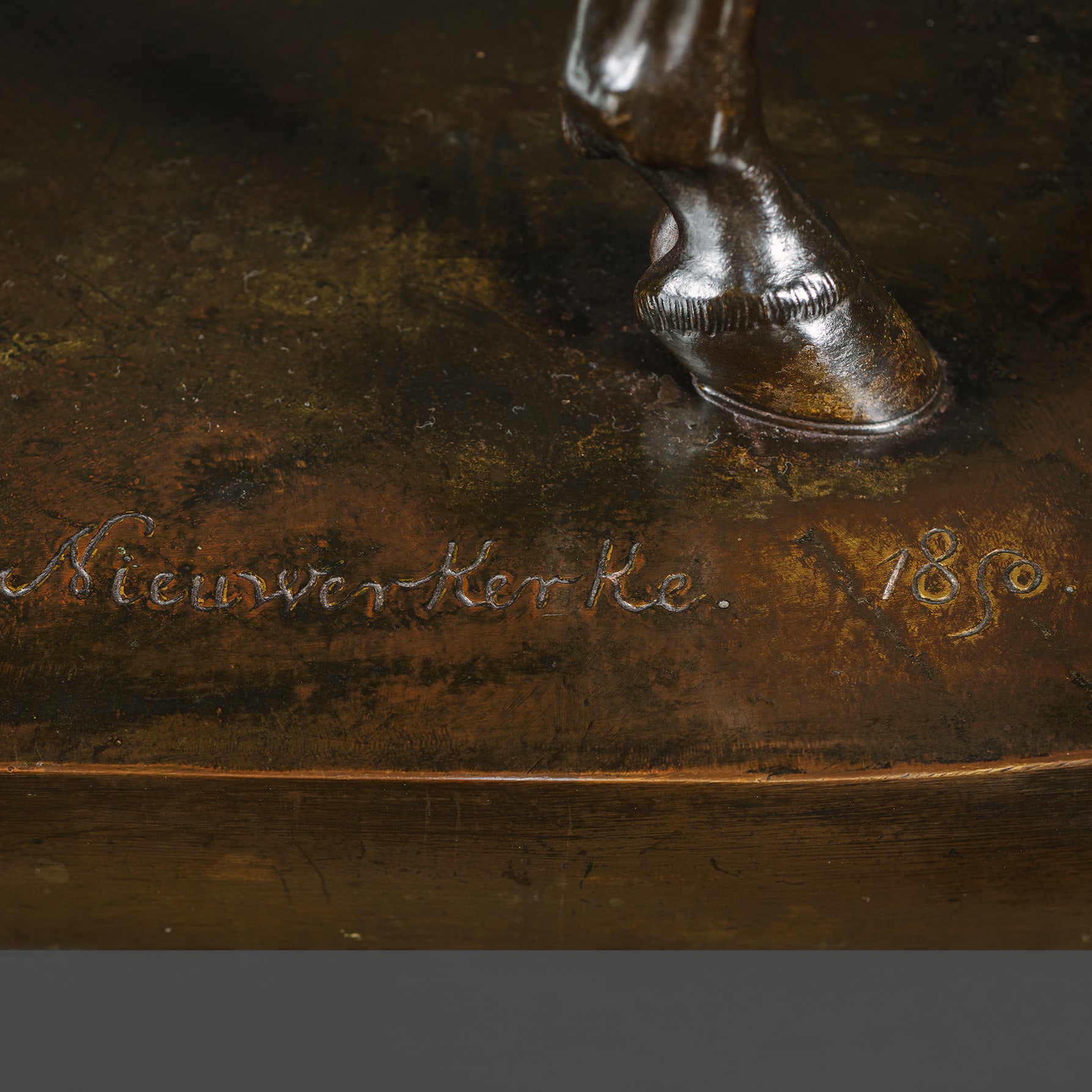

 Imprimer
Imprimer